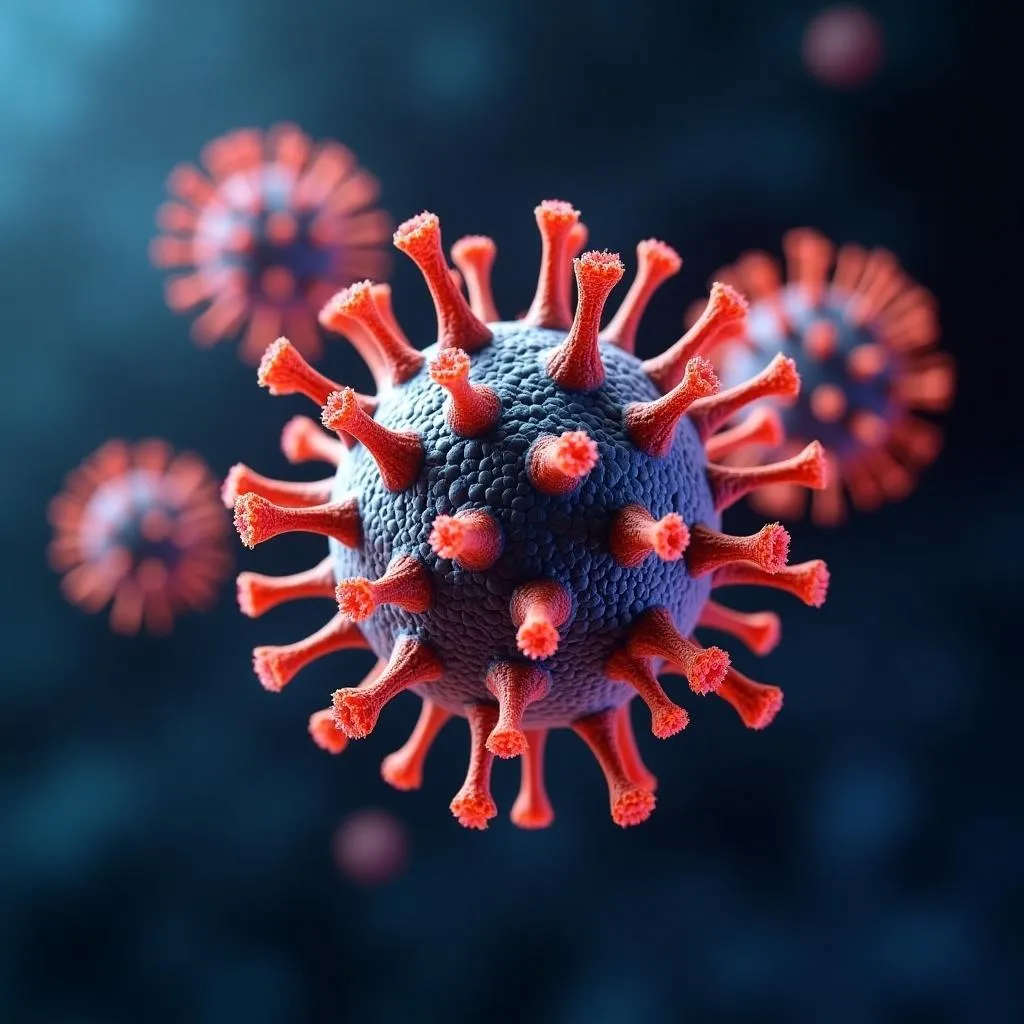Understanding Your SARS-CoV-2 Spike Protein Levels
Spike protein Guide to Structure, Impact, and Personalized Care with Dr. Dale Kimberlin
Authored by Dr. Dale Kimberlin, Kimberlin Chiropractic Health Systems
The SARS-CoV-2 spike protein is a critical viral component responsible for infection and immune response. Its presence in the body, whether from infection, vaccination, or environmental factors, can persist and impact long-term health. Understanding and identifying your personal spike protein levels is therefore vital for personalized health management.
Dr. Dale Kimberlin with Kimberlin Chiropractic Health Systems is at the forefront, helping his patients assess their spike protein status to recommend tailored, natural care plans. In this guide, you’ll explore why identifying its presence matters; how mutations in variants affect transmissibility and immune escape; the role of persistent spike protein in chronic symptoms and organ damage, and how knowing your levels can guide intervention; the potential impact of various exposures, including vaccines, on spike protein levels; and emerging therapies targeting spike function.
Why Is Identifying Your Spike Protein Levels Important?
The SARS-CoV-2 spike protein defines the virus’s ability to infect human cells and shapes immune recognition. Monitoring its presence in the body is a crucial step in managing health, especially given concerns about its potential persistence from various sources. For individuals, knowing your spike protein levels can provide critical insights into your current health status and guide proactive wellness strategies, a core principle at Kimberlin Chiropractic Health Systems.
Ready to Understand Your Spike Protein Levels?
Dr. Dale Kimberlin and the team at Kimberlin Chiropractic Health Systems specialize in helping patients identify their individual spike protein status to develop targeted, personalized care plans, focusing on natural health and wellness. Don't guess about your health – get the facts, especially concerning persistent spike protein from various sources.
How Do Spike Protein Mutations and Variants Affect Your Body's Spike Protein Levels and Overall Health?
Spike protein mutations in variants can alter its behavior, potentially influencing how long it remains detectable in the body and its overall impact on health. These changes can affect transmissibility and immune evasion. For individuals, understanding the implications of these evolving variants and their potential for persistent spike protein is a key focus for Dr. Kimberlin's patient assessments, guiding personalized care.
The Role of Spike Protein Levels in Long COVID and Health Complications: Why Assessment Matters
Persistent spike protein in tissues is increasingly linked to chronic inflammation, endothelial dysfunction, and neurological damage, contributing to conditions like Long COVID. Identifying the presence and levels of this persistent spike protein is a critical first step in addressing these long-term health challenges, a service provided by Dr. Dale Kimberlin. Research, including a study by Helmholtz Munich and LMU, has demonstrated spike persistence in brain tissues for up to four years, correlating with accelerated brain aging. Spike protein can enter the body through infection, vaccination, and potentially environmental factors, making personalized assessment crucial.
Spike Protein Accumulation in Brain Axis Linked to COVID-19 Neurological Sequelae
"We observed the accumulation of SARS-CoV-2 spike protein in the skull-meninges-brain axis of human COVID-19 patients, persisting long after viral clearance. Persistence of spike protein at the skull-meninges-brain axis may contribute to the neurological sequelae of COVID-19." — Z Rong, 2024
Vascular effects of isolated spike protein, first reported by the Salk Institute in April 2021, include endothelial cell damage, pro-thrombotic states, and microvascular inflammation. For patients experiencing these symptoms, knowing their spike protein levels can provide invaluable insights, guiding personalized care plans and therapeutic interventions.
How does spike protein persistence contribute to long COVID symptoms?
Chronic spike antigen presentation sustains immune activation, leading to neuroinflammation, fatigue, and cognitive impairment. Identifying these persistent levels is key to targeted interventions.
What neurological and vascular effects are linked to spike protein?
Neurological effects include meningitis-like inflammation and accelerated neuronal aging; vascular consequences encompass endothelial barrier breakdown, microthrombi formation, and organ hypoxia. Assessing spike protein levels can help correlate these effects with individual patient data.
What recent research reveals about spike protein in brain meninges and bone marrow?

The 2025 Helmholtz Munich/LMU analysis detected spike glycoprotein in cerebral meninges and skull marrow niches, linking it to persistent inflammatory markers. This research underscores the importance of identifying such persistence in living patients.
How do spike protein-induced vascular damages explain COVID-19 complications?
Spike binding to endothelial ACE2 disrupts nitric oxide signaling, triggers cytokine release, and promotes leukocyte adhesion, explaining acute respiratory distress and later vascular sequelae. Understanding individual spike protein levels can help predict and manage these complications.
| Complication | Mechanism | Supporting Evidence |
|---|---|---|
| Neuroinflammation | Microglial activation by spike | Helmholtz Munich/LMU 2025 |
| Endothelial dysfunction | ACE2-mediated barrier disruption | Salk Institute April 2021 |
| Microthrombosis | Pro-thrombotic cytokine cascade | Ex vivo vascular studies |
| Chronic fatigue | Persistent immune stimulation | Long COVID cohort analyses |
How Do COVID-19 Vaccines Use the Spike Protein and Influence Your Body's Levels?
COVID-19 vaccines introduce genetic instructions for cells to produce the spike protein, aiming to elicit an immune response. However, concerns have been raised that these vaccines can lead to increased or prolonged levels of spike protein in the body. Understanding how vaccines influence spike protein presence is crucial for comprehensive health assessment, especially for those concerned about post-vaccination or post-infection effects. Monitoring spike protein levels is a valuable part of a holistic health strategy, helping individuals understand their unique response and potential for persistent spike protein.
How do mRNA and viral vector vaccines induce spike protein production?
mRNA vaccines deliver mRNA encoding spike, prompting translation; viral vectors deliver spike DNA for transcription. The resulting spike protein can be expressed, and its duration and impact on overall spike protein levels are subjects of ongoing discussion and concern.
What are the differences between vaccine-induced and viral spike proteins?
Vaccine spike includes stabilizing mutations; viral spike undergoes native cleavage and glycosylation. These differences can affect how long spike protein remains detectable and its potential impact on the body, with some suggesting vaccine-induced spike may persist.
What are common side effects related to spike protein in vaccines?
Concerns about side effects, including myocarditis or pericarditis, have been raised in relation to immune responses against spike protein expressed in cardiac tissue following vaccination. Monitoring spike protein levels can help understand individual responses and potential adverse effects.
Do vaccines contribute to spike protein accumulation in the body?
While vaccines are designed to elicit an immune response, some research and observations suggest that vaccine-induced spike protein may persist or contribute to elevated levels in the body. This raises questions about the immune system's long-term management of spike protein levels, a factor Dr. Kimberlin considers in patient care.
| Vaccine Type | Spike Presentation | Potential Impact on Levels | Concerns Raised |
|---|---|---|---|
| mRNA (Pfizer) | Prefusion-stabilized spike | Potential for persistence | Myocarditis, pericarditis |
| Viral vector | Native spike expression | Potential for persistence | Thrombocytopenia, other adverse events |
| Protein subunit | Recombinant spike fragments | Variable persistence | Injection site reactions, other effects |
What Therapeutic Strategies Target the Spike Protein, Guided by Your Personal Levels?
Various therapeutic strategies, including antiviral and immunotherapeutic approaches, aim to block spike protein function or enhance its clearance. For individuals with identified elevated or persistent spike protein levels, these therapies become particularly relevant. Dr. Kimberlin's approach emphasizes that understanding your specific spike protein status can help tailor discussions around these and other emerging therapeutic options, ensuring a personalized and effective care plan.
What antiviral therapies inhibit spike protein function?
Therapies include RBD-binding monoclonals and fusion inhibitory peptides. The effectiveness of these therapies can be monitored by assessing changes in spike protein levels.
How are universal coronavirus vaccines targeting conserved spike protein regions?
Researchers engineer immunogens based on the spike stem, focusing immune responses on highly conserved fusion machinery to achieve cross-strain protection. These efforts aim to reduce the overall burden of spike protein in future infections.
Frequently Asked Questions About Spike Protein Levels and Personalized Care
Researchers and clinicians often face several recurring concerns about the SARS-CoV-2 spike protein’s roles, risks, and behavior, with an increasing focus on individual spike protein levels and potential environmental sources.
Researchers and clinicians often face several recurring concerns about the SARS-CoV-2 spike protein’s roles, risks, and behavior, with an increasing focus on individual spike protein levels and potential environmental sources.
How can spike protein levels be accurately measured, especially considering various sources like infection, vaccination, and environmental factors?
Do isolated spike protein fragments pose direct toxicity to tissues, and how can identifying these fragments inform treatment?
How long does spike protein remain detectable post-infection, and what is its link to chronic inflammation?
How do mRNA and vector vaccines impact post-vaccination spike protein levels and potential long-term effects?
What symptoms are related to spike-induced tissue damage, and how can spike protein levels be assessed to guide care?
These recurring topics highlight the spike protein’s central importance in infection, immunization, and long-term health outcomes, underscoring the need for continued research and therapeutic innovation, and the value of personalized assessment offered by Kimberlin Chiropractic Health Systems.
Spike Protein's Role in Long-COVID: Neuroinflammation and Potential Pathogenesis
"Increasing evidence indicates that many patients develop a chronic condition characterized by fatigue and neuropsychiatric symptoms, termed long-COVID... Recent publications provide new findings that may help decipher the pathogenesis of long-COVID... there is urgent need to better understand the neurotoxic effects of the spike protein and to consider possible interventions to mitigate spike protein-related detrimental effects to the brain." — TC Theoharides, 2022
All In On Wellness - Ankeny's Top Chiropractic Care
Pregnancy and family chiropractic care in ankeny
$50 new patient special
Stop gambling with your health. Kimberlin Chiropractic is your sure bet to a better tomorrow.

Lorem Ipsum is simply dummy text of the printing and typesetting industry. Lorem Ipsum has been the industry's standard.

Lorem Ipsum is simply dummy text of the printing and typesetting industry. Lorem Ipsum has been the industry's standard.

Lorem Ipsum is simply dummy text of the printing and typesetting industry. Lorem Ipsum has been the industry's standard.
Jennifer Ebron
Neck Pain Treatment
Christopher Strock
Back Pain Treatment
Christopher Strock
Back Pain Treatment

